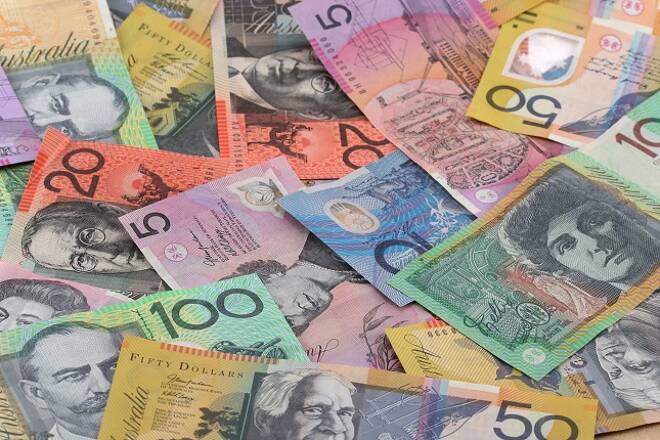Advertisement
Advertisement
Aussie to Appreciate Against Yen Despite Lacking Appetite versus US Dollar and Euro
By:
The Reserve Bank of Australia maintained the status quo at its March monetary policy meeting. The cash rate target remained unchanged at 1.5%.
The Reserve Bank of Australia (RBA) maintained the status quo at its March monetary policy meeting. The cash rate target remained unchanged at the historical low of 1.5%.
The accompanying statement matched the dovish expectations. The RBA cited that prospects for higher global growth, the US-based reflation rally and the recovery in commodity prices improved the economic fundamentals in Australia. Nevertheless, the policymakers highlighted that the Chinese growth risks, mixed labour market conditions and variable housing market across the country encourage the RBA to leave the rates low for a longer period of time. The current inflation level is also convenient to keep the lending conditions loose in Australia in order to support the country’s decision to proceed with a structural shift from the mining to construction sector.
In this context, the RBA is unlikely to raise rates in 2017.
Historically Low Australian Rates are Discouraging for Carry Trades
Australian dollar is historically known to bear high interest. This is why, it has long been one of carry traders’ favourite long leg. In fact, the AU 2-year sovereign paper yielded above 7%, as the 10- year yields were just shy of 7% in 2008, before the subprime crisis brought all central banks to aggressively loosen their monetary conditions for many years to follow.
As such, the Reserve Bank of Australia lowered its interest rates from 7.25% to 1.5% from 2008 to 2016. As a result, the AU 2-year yields fell below 1.5% and stand below the 2% level as of today, while the 10-year yield traded below the 2% level in 2016 and recovered to almost 3% as the RBA soften its dovish stance this week, without however signaling a change to its rate policy any time soon. Instead, the bank said to stay accommodative for quarters to come.
During the same period, the low rate currencies, also known as funding currencies in carry traders’ jargon, experienced sharp falls on their interest rates and yields as well. The Federal Reserve’s (Fed) Funds rate were lowered from 5.25% to 0%, Bank of Japan (BoJ) abandoned its rate target for a period of time and decide to target -0.10% starting from 2016, the European Central Bank (ECB) pulled the deposit facility rate from 3.25% to -0.40%, as the Swiss National Bank (SNB) dared even deeper negative rates and fixed its sight deposit rate to -0.75%.
The zero-rate environment in the US, Japan and Europe lifted the Australian dollar from 2008 to 2011. The Australian rates had a relatively better return and the Aussie was appreciating.
The AUD/USD traded from 0.60 to nearly 1.10 then started sliding lower. The pair traded at 0.6800 in 2016 as the RBA hinted that 0.65 level would be convenient for boosting the economic recovery.
Since 2016, the AUD/USD remains ranged between 0.70-0.78.
What will Happen with Higher US Yields?
The Fed’s shift to a faster monetary policy tightening and the resulting higher US rates are a clear game changer onwards. Given that the RBA is not close to move anytime soon, the narrowing AU-US rate differential will likely discourage carry traders from buying the relatively lower yielding Aussie, and funding the long leg with a relatively higher yielding US dollar.
As of today, the AU 10-year yields are just shy of 3%, while the US 10-year yields advanced to 2.62%, the highest level on the Trump reflation rise.
As a consequence, the AUD/USD is expected to remain offered pre-0.78 and gradually lose ground toward the 0.72/0.70 range.
Positive Potential against the Yen, Mixed Outlook against the Euro
Despite the dovish European Central Bank (ECB) outlook, the EUR/AUD recovered past 1.40 handle and could extend gains toward the 200-day moving average, 1.4487. Nevertheless, the upside potential could remain capped by the long-term bearish trend top and encourage a pullback to 1.40 level and below.
The Aussie has potential to appreciate against the Japanese yen, given that the Bank of Japan (BoJ) is set to remain seated on the historically low rates as well.
The AUD/JPY should continue its climb toward the 0.90 mark by the end of the first quarter of 2017.
This article is written by Ipek Ozkardeskaya, a senior market analyst at LCG
About the Author
Guestauthor
Advertisement
